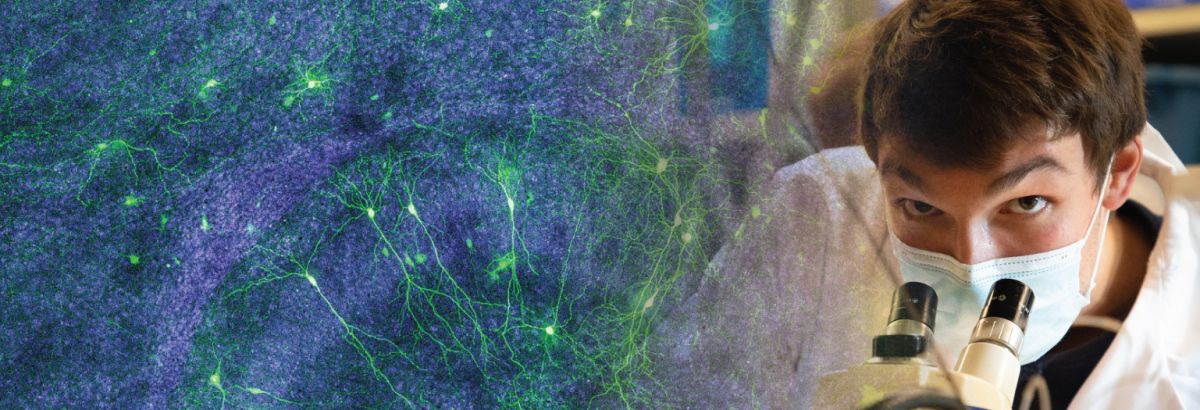Neuroscience is an exciting and sought after major for Ñý¼§Ö±²¥ pursuing careers in medicine, dentistry, physical therapy, etc. It is important to remember that “Pre-Med” is not an academic major in itself, so Ñý¼§Ö±²¥ need to complete a B.S. or B.A. degree in a designated field of study in addition to completing the course prerequisites of the professional healthcare program they will pursue after graduation.
There are a numerous of reasons why Neuroscience degrees are growing in popularity, and now rank 3rd nationwide, as the science major of choice for Pre-Med Ñý¼§Ö±²¥.
“Our most popular majors are more interdisciplinary like neuroscience or medical, health and society, where those majors have pre-med requirements, but also allow the student to understand a broad scope of health care in general," says Michelle Grundy, director of the health professions advising office for Vanderbilt University undergraduates. US News & World Report, F. Powell, March 20, 2017
- Interdisciplinary Curriculum: Neuroscience integrates knowledge from biology, chemistry, physics, biochemistry, anatomy and physiology, among others. This interdisciplinary perspective provides an exceptional foundation for all health professions.
- Overlapping Requirements: Almost all of courses required for UM’s B.S. degree in Cellular & Molecular Neuroscience are the same ones required by medical schools (see below) and other health professions. This means fewer “extra” courses, saving time and energy.
- MCAT Preparation: “Behavioral Sciences”, which is a fundamental segment of neuroscience, is now a section on the MCAT exam. It is also becoming an increasingly important topic in medical education.
- Research Emphasis: UM’s Neuroscience program embraces the importance of research both in the classroom and in creating hands-on training opportunities in faculty labs. Such experience is an increasingly critical component in professional program applications.
- Disease Focus: Students with a vested interest in biomedical sciences and healthcare, find the emphasis on brain injury and disease that runs throughout many neuroscience courses to be both compelling and relevant.
An overlap of the courses typically required for both applying to professional and those in the Cellular & Molecular Neuroscience major are detailed below
Medical School Prerequisite Courses
Also Required for the Cellular & Molecular Neuroscience Major
Elective for the Cellular & Molecular Neuroscience Major
| Cell & Molec Major | Prefix | Number | Course Name | Credits |
|---|---|---|---|---|
| X | BIOB | 160N/161N | Princ. of Living Systems & Lab | 3/1 |
| X | CHMY | 141N/142N | Coll. Chemistry 1 & Lab | 4/1 |
| BIOB | 170N/171N | Princ. of Biol. Diversity & Lab | 3/2 | |
| X | CHMY | 143N/144N | Coll. Chemistry 2 & Lab | 4/1 |
| X | CHMY | 221/222 | Organic Chemistry 1 & Lab | 3/2 |
| X | CHMY | 223/224 | Organic Chemistry 2 & Lab | 3/2 |
| X | PHSX | 205N/206N | College Physics 1 & Lab | 4/1 |
| X | PHSX | 207N/208N | College Physics and Lab | 4/1 |
| X | BCH | 480 | Advanced Biochemistry | 3 |
| X | BCH | 482 | Advanced Biochemistry | 3 |
| X | STAT | 216 | Intro to Statistics | 4 |
| X | M | 162 | Applied Calculus | 4 |
| SOCI | 101S | Intro to Sociology | 3 | |
| PSYX | 100S | Intro to Psychology | 3 |
Recommended/Optional Courses for Medical School
| Cell & Molec Major | Prefix | Number | Course Name | Credits |
|---|---|---|---|---|
| X | BIOB | 260 | Cell and Molecular Biology | 4 |
| X | BIOB | 272 | Genetics & Evolution | 4 |
| HMED | 140 | PreMed 101 | 2 | |
| X | BIOH | 365 | Human Anat. & Physiol 1 Hlth Prof. | 4 |
| BIOH | 370 | Human Anat. & Physiol 2 Hlth Prof. | 4 | |
| X | BCH | 380** |
Biochemistry |
4 |
| X | PSYX | 250N** |
Biological Psychology |
3 |
| PSYX | 383 | Health Psychology | 3 |
